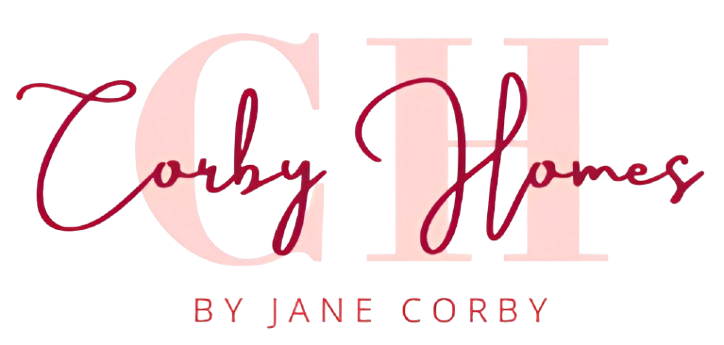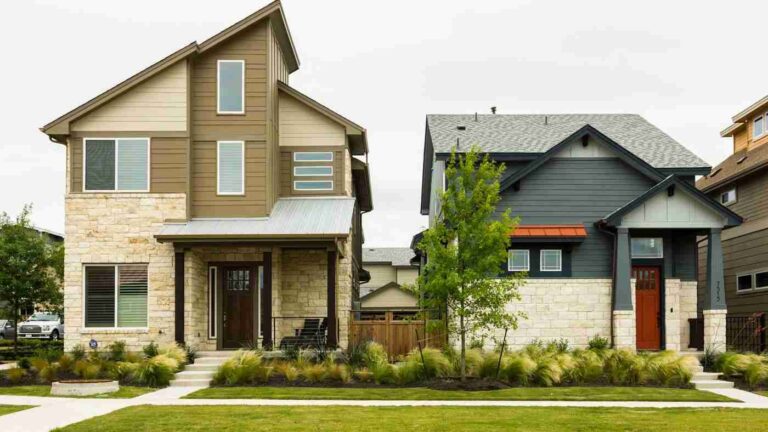So you’re curious about Austin’s real estate market? Smart move.
This Texas hotspot has been making headlines for years, and there’s a good reason why so many people want in.
Whether you’re thinking about buying your first home, upgrading to something bigger, or maybe looking at investment properties, knowing where Austin’s headed can save you from costly mistakes and help you spot golden opportunities before everyone else does.
10 Tips How The Future Of Austin’s Real Estate Growth, Trends, and Opportunities
Let’s get real about Austin’s property market.
The city’s changed a ton in the last decade, and it’s still changing fast.
These tips will help you stay ahead of the curve instead of chasing yesterday’s hot neighborhoods or overpaying in a cooling market.
Understand Austin’s Population Growth
Austin keeps growing like crazy.
The city adds roughly 150 people every single day.
That’s like a small village moving to Austin each week! Most newcomers are young professionals between 25 and 40, and they’re coming from California, New York, and other high-cost states.
What does this mean for real estate? Steady demand. Even when the market cools nationally, Austin tends to stay warmer because people keep coming.
The fastest growth is happening in the suburbs like Pflugerville, Round Rock, and Buda where families can find more space for less money.
Want to spot opportunity? Watch population migration patterns.
The areas seeing the biggest influx of new residents today will likely see the biggest property value jumps tomorrow.
Watch the Tech Boom and Job Market
Austin isn’t just growing randomly.
It’s growing because companies are moving here.
Tesla, Oracle, Google, Apple, Facebook – they’ve all expanded their Austin footprint massively in recent years.
The Domain has turned into a second downtown with major tech companies taking up entire buildings. And let’s not forget about the new Tesla Gigafactory in East Austin that’s creating thousands of jobs.
When big companies move in, they bring high-paying jobs.
High-paying jobs mean more people who can afford higher home prices.
This ripple effect makes surrounding neighborhoods more valuable.
Pay attention to company announcements.
When a major employer announces a new campus or expansion, property values in nearby areas typically jump 15-20% in the following two years.
Explore Emerging Neighborhoods
The secret to making smart real estate moves in Austin? Spot tomorrow’s hot neighborhoods today.
East Austin was once overlooked, now it’s among the most expensive areas in the city.
The pattern keeps repeating.
Currently, Southeast Austin neighborhoods like Montopolis and Del Valle are showing signs of being the next big thing.
They’re still relatively affordable but have caught developers’ attention.
New restaurants, coffee shops, and small businesses are moving in – usually the first sign of neighborhood transformation.
North Austin near The Domain continues to develop rapidly as tech companies expand there. St. Elmo and the area around St. Edward’s University are seeing similar growth.
Look for neighborhoods with new construction, local businesses opening, and improved public spaces – these changes typically come before major price jumps.
Consider Infrastructure and Transit Developments
Austin’s growth came with growing pains – mainly traffic. But that’s changing with major investments in transportation.
Project Connect, Austin’s $7.1 billion transit plan, includes new light rail lines, expanded bus service, and a downtown transit tunnel.
Areas near planned stations will likely see property values increase 10-25% once construction begins.
The expansion of highways like 183, MoPac, and I-35 will make outlying areas more accessible.
Places that were once “too far out” become viable when commute times shrink.
East Riverside is getting completely transformed by transit-oriented development.
Properties there have already jumped in value as investors anticipate the coming light rail connection.
One of the strongest signals of where Austin’s real estate is headed can be seen in the Austin multifamily market which continues to expand as thousands of new residents move to the city each year.
Developers are building apartments near transit lines to meet this demand.
Pay Attention to Sustainability and Green Building
Austin takes green building seriously.
The city has some of the most progressive sustainability requirements in the country, and buyers are willing to pay more for eco-friendly homes.
Solar panels, rainwater collection, energy-efficient appliances, and smart home features aren’t just nice extras in Austin – they’re becoming expected features, especially in homes above the median price point.
New developments like Whisper Valley in East Austin build sustainability into every home with geothermal heating/cooling and solar panels standard.
These features typically add 5-10% to a home’s resale value.
Austin Energy’s Green Building program rates homes on their sustainability.
Homes with high ratings sell faster and for more money than comparable properties without certification.
Going green isn’t just good for the planet – it’s good for your investment too.
Look at Rental Market Trends
Austin’s rental market tells us a lot about where the sales market is heading.
Currently, rents are stabilizing after years of dramatic increases.
The sweet spot for rental investments in Austin right now is mid-range apartments and homes ($1,500-2,200/month).
They rent quickly and have lower vacancy rates than luxury units.
Student housing near UT Austin remains a solid investment with consistently high occupancy rates and steady rental income.
The same goes for rental properties near Austin Community College campuses.
Short-term rentals performed well in certain areas, but watch the regulations.
Austin has tightened rules on Airbnb and VRBO properties in recent years, making traditional long-term rentals a safer bet in many areas.
Smart investors watch the gap between rental income and mortgage payments.
When this “rent-to-price ratio” improves in a neighborhood, it often signals an area ready for appreciation.
Be Aware of Affordability Challenges
Austin’s success created a serious affordability problem.
The median home price jumped from about $250,000 in 2012 to over $550,000 today.
That’s great if you already own, but tough if you’re trying to get in.
This affordability gap creates both challenges and opportunities.
The city has responded with programs like the Affordable Housing Bond and developer incentives for including affordable units in new projects.
Areas with good affordability programs will likely see more balanced, sustainable growth.
East Austin’s Colony Park and the Mueller development have successful models for mixing market-rate and affordable housing.
For investors and homebuyers, the sweet spot is finding areas that balance affordability with growth potential.
Sometimes that means looking at suburbs like Manor or Del Valle where prices haven’t climbed as dramatically.
Monitor Policy and Zoning Changes
Nothing impacts property values like changes in local laws and zoning.
Austin is in the middle of a major code rewrite that could dramatically change what can be built and where.
The trend is toward higher density development, especially along major corridors and near transit stations.
Properties in these areas could see big value increases if they can be redeveloped into multi-unit buildings.
The city’s vertical mixed-use (VMU) overlay allows taller buildings with ground-floor retail and residential above.
Properties in VMU zones typically command premium prices because of their development potential.
Recent relaxed rules on accessory dwelling units (ADUs) let homeowners add small second homes on their properties.
This creates rental income possibilities for homeowners while increasing housing supply.
Stay plugged into city council meetings and planning commission hearings.
Knowing about zoning changes months before they hit the news gives you a major advantage.
Keep an Eye on Commercial Real Estate Shifts
Commercial real estate patterns predict residential trends.
When companies lease office space or retailers move in, housing demand follows.
Austin’s office market is evolving post-pandemic.
Companies want flexible spaces, and remote work has changed how much office space businesses need.
Neighborhood retail centers with restaurants, coffee shops, and service businesses are doing well, while traditional big-box retail faces challenges.
Areas with thriving small business scenes often see housing values rise next.
Mixed-use developments combining retail, office, and residential in one project are Austin’s future.
The Domain, Mueller, and Seaholm are successful examples, and more are coming to other parts of town.
Commercial investors are looking at older shopping centers and office buildings for redevelopment into housing or mixed-use.
These projects often revitalize entire neighborhoods.
Think Long-Term with Lifestyle Trends
What people want in a home changes over time.
Right now, Austin homebuyers increasingly value walkability, outdoor space, and community connection.
Work-from-home has permanently changed housing preferences.
Dedicated office space, faster internet, and good separation between living and working areas are now major selling points.
Multigenerational housing is growing more common as housing costs rise and families combine resources.
Homes with separate entrances, in-law suites, or conversion potential command premium prices.
Health and wellness features like home gyms, meditation spaces, and air quality filtration systems gained importance post-pandemic and aren’t going away.
Communities with trails, parks, and outdoor gathering spaces outperform those without.
The success of Mueller and other master-planned communities proves people will pay more to live in well-designed neighborhoods with amenities that support active lifestyles.
Conclusion
Austin’s real estate market isn’t slowing down anytime soon, but it is changing.
The days of easy double-digit gains might be behind us, but opportunities still abound for those who know where to look.
The key is thinking beyond just buying and selling.
Understanding the forces shaping Austin’s growth helps you make smarter decisions, whether you’re looking for your forever home or your next investment property.
The neighborhoods, features, and property types that will perform best in the coming years might surprise you.
They won’t be exactly the same as what worked in the past decade.
But with a little insight and forward thinking, you can position yourself for success in Austin’s next chapter.

